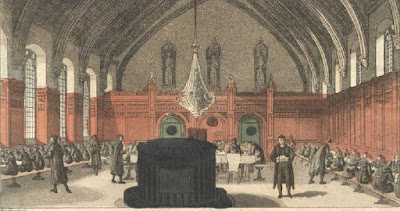Because Lollards believed that baptism and confession were not necessary for salvation, many people were drawn to Lollardy: it was comforting to know that generations of good people who were never baptized would be welcome into Heaven.
Many priests appreciated Lollardy for its egalitarian and back-to-basics nature: praying to saints and saints' images was idolatry that should be shunned. A Bible in the vernacular was important so that everyone who wished (but did not know Latin) had access to it. All the "smells and bells" trappings of the Roman Catholic Church (bells, organs, holy water, incense, grand buildings), were not Bible-based and just being grandiose for the sake of it. Clerics should not be allowed to hold positions in government and have temporal power.
Lollards did not bother with fasting or abstinence, and they challenged clerical celibacy. They did not recognize any special authority of the pope, and especially of papal pardons. Personal piety was more important than what the Church said it could do for you. This made the individual feel more responsible for and in charge of his life.
This idea of the importance of the individual rather than the importance of the "higher powers" in society was very attractive to the common people, and spilled over to their notions of the need for social and economic reform. Heavy taxation and always being made to feel that you were less important than the nobility started to be questioned. Lollardy's tenets were intimately tied to movements such as the Peasants' Revolt of 1381.
Not just commoners were drawn to Lollardy. There was a group of Lollard Knights in the last quarter of the 1300s. Among them were Lewis Clifford, John Clanvowe, and Richard Stury. I mention those names particularly because they were all friends of Geoffrey Chaucer, himself someone who was willing to make fun of the clergy, write about the common man, and write in English (court literature prior was usually in French).
All these men had another person in common, one far more powerful than they. That was John of Gaunt, third son of King Edward III and uncle of King Richard II. Gaunt was at one time the most powerful and influential man in England, but all things come to an end. I'd love to tell you more tomorrow.










